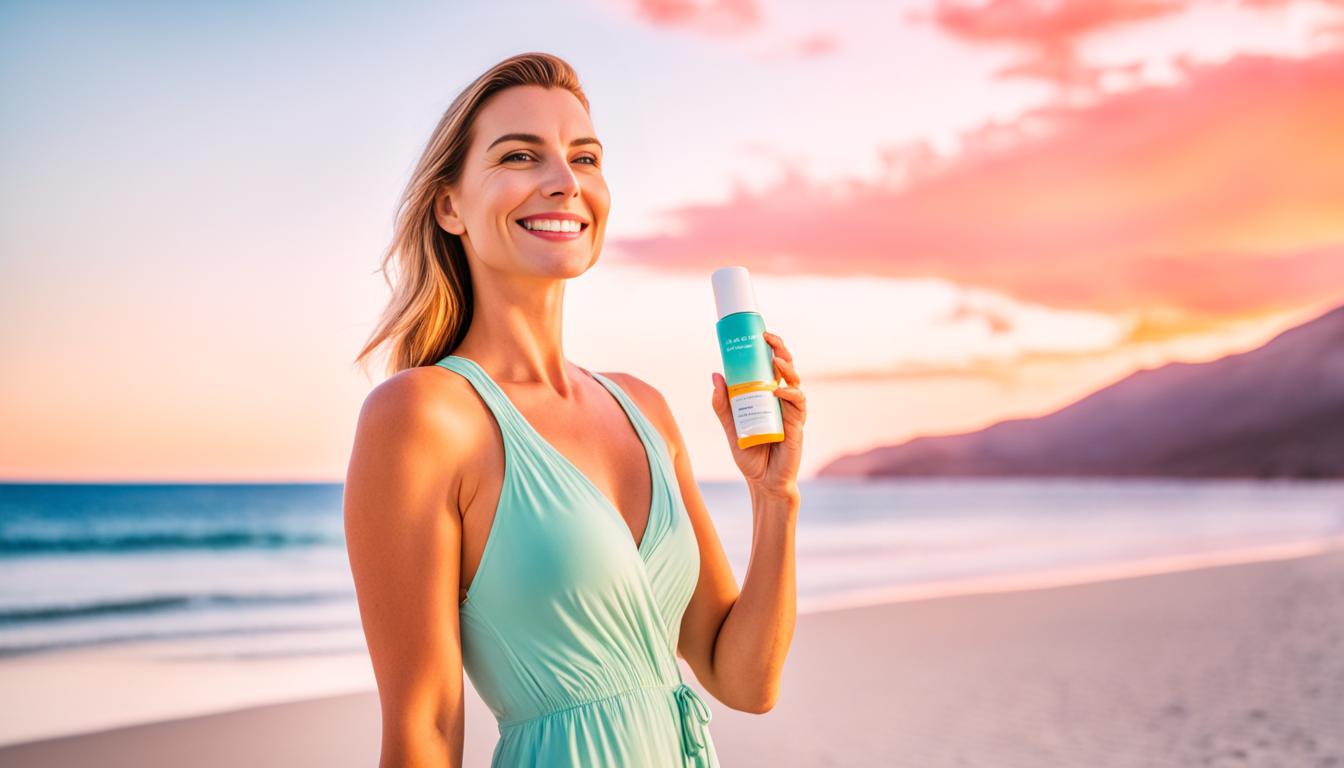Protecting your skin from the harmful effects of the sun is crucial for maintaining optimal skin health. Exposure to the sun’s ultraviolet (UV) rays can lead to various skin issues, including premature aging, sunburn, and an increased risk of skin cancer. By implementing effective sun protection strategies, you can safeguard your skin and ensure its long-term health and safety.
In this article, we will delve into the importance of sun protection for skin health. We will explore the damaging effects of UV rays on the skin and provide you with practical tips on how to protect your skin effectively. Additionally, we will discuss the role of regular skin checks, the importance of tailoring sun protection methods to different skin types, and the impact of sun protection on anti-aging. Finally, we will guide you on how to incorporate sun protection into your daily skincare routine and emphasize the significance of education and awareness in promoting skin health safety.
Understanding the Damaging Effects of UV Rays
UV rays, also known as ultraviolet rays, can have detrimental effects on the skin when exposed for prolonged periods. It is essential to comprehend the damaging impact of these rays to comprehend the significance of proper sun protection.
Prolonged exposure to UV rays can lead to various skin concerns, including premature aging, wrinkles, sunburn, and an increased risk of skin cancer. UV rays penetrate the skin and damage its DNA, causing the breakdown of collagen and elastin fibers, which are responsible for maintaining the skin’s firmness and elasticity.
As a result, prolonged exposure to UV rays can result in the formation of fine lines, wrinkles, and age spots, making the skin look older than it is. Moreover, UV rays can cause sunburn, which is not only painful but also damages the skin cells and increases the risk of skin cancer.
To visually grasp the damaging effects of UV rays on the skin, take a look at the image below:
Effective Strategies for Sun Protection
Protecting your skin from the harmful impact of UV rays is essential for maintaining skin health. In this section, we will explore a range of effective strategies that you can implement to ensure effective sun protection.
1. Use broad-spectrum sunscreen: Choose a sunscreen that provides both UVA and UVB protection. Look for a broad-spectrum sunscreen with a high SPF (sun protection factor) of 30 or higher to shield your skin from harmful rays.
2. Apply sunscreen generously: Apply sunscreen generously to all exposed skin, including the face, neck, arms, and legs. Make sure to reapply every two hours or more frequently if you’re swimming or sweating.
3. Seek shade: Limit your sun exposure by seeking shade, especially during the peak sun hours between 10 a.m. and 4 p.m. When outdoors, try to stay under umbrellas, trees, or other structures that provide protection from the sun.
4. Wear protective clothing: Cover up with clothing that provides additional sun protection. Opt for long-sleeved shirts, long pants, wide-brimmed hats, and sunglasses with UV protection to shield your skin and eyes.
5. Be mindful of reflective surfaces: Reflective surfaces, such as water, sand, and snow, can increase your exposure to UV rays. Take extra precautions when near these surfaces by wearing sun-protective clothing and applying sunscreen.
6. Avoid tanning beds: Tanning beds emit harmful UV rays that can damage your skin and increase the risk of skin cancer. It’s best to avoid them altogether and opt for sunless tanning alternatives if desired.
By adopting these effective sun protection strategies into your daily routine, you can safeguard your skin from the detrimental effects of UV rays and promote long-term skin health.
Importance of Regular Skin Checks
Regular skin checks are a crucial part of maintaining healthy skin. These checks involve monitoring your skin for any changes or abnormalities that may indicate potential skin issues. By being proactive and vigilant about regular skin checks, you can catch any concerns early and seek appropriate medical attention if necessary. It is recommended to perform these checks at least once a month to ensure optimal skin health.
During a skin check, carefully examine your entire body, including hard-to-reach areas like your scalp, back, and soles of your feet. Look for any changes in moles, freckles, or birthmarks, such as changes in size, shape, color, or texture. Pay attention to any new growths, sores that don’t heal, or persistent itching or bleeding.
If you notice any suspicious changes or have concerns about your skin, it is important to consult a dermatologist or healthcare professional. They can evaluate your skin, provide a proper diagnosis, and recommend appropriate treatment if necessary. Remember, early detection of potential skin issues through regular skin checks can significantly improve outcomes and overall skin health.
Sun Protection for Different Skin Types
When it comes to sun protection, one size does not fit all. Different skin types have varying levels of sensitivity and susceptibility to damage from the sun’s harmful UV rays. It’s essential to understand your skin type and tailor your sun protection methods accordingly to ensure optimal skin health and safety.
One common skin type is fair skin, which tends to be more susceptible to sunburn and UV damage. If you have fair skin, it’s crucial to prioritize sun protection by using sunscreen with a high SPF, wearing protective clothing, and seeking shade during peak sun hours.
On the other hand, sensitive skin requires extra care and attention when it comes to sun protection. Sensitive skin is more prone to irritation, so it’s important to choose sunscreens that are specifically formulated for sensitive skin and free from harsh chemicals or fragrances that could potentially cause a reaction.
Darker skin tones also need sun protection, although the risk of sunburn may be lower. Darker skin is more likely to experience hyperpigmentation, uneven skin tone, and sun damage that may not be immediately visible. Using a broad-spectrum sunscreen and avoiding excessive sun exposure can help protect the skin and maintain its natural radiance.
The Role of Sun Protection in Anti-Aging
Sun protection is not just about preventing sunburn or avoiding skin damage in the short term. It also plays a crucial role in preventing premature aging of the skin. Consistent sun protection measures can help minimize the appearance of wrinkles, age spots, and other signs of aging caused by sun exposure.
UV rays from the sun can penetrate the skin’s surface and damage the collagen and elastin fibers, which are responsible for maintaining the skin’s firmness and elasticity. This damage leads to the development of fine lines, wrinkles, and sagging skin. Additionally, prolonged sun exposure can stimulate the production of melanin, resulting in the formation of dark spots and uneven skin tone.
By prioritizing sun protection, you can significantly reduce the visible signs of aging and keep your skin looking youthful and radiant. Consistent use of broad-spectrum sunscreen with a high SPF, along with protective clothing and seeking shade during peak hours, will help shield your skin from the harmful effects of UV rays.
Remember, prevention is key when it comes to maintaining youthful skin. Incorporating sun protection into your daily skincare routine is essential for achieving long-term anti-aging benefits. Make sure to apply sunscreen with at least SPF 30 every day, even on cloudy days or during the winter months. Reapply it every two hours and after swimming or sweating.
Protecting your skin from the sun should be a lifelong commitment. By practicing sun protection consistently, you can ensure that your skin stays healthy, vibrant, and free from the visible signs of aging for years to come.
Incorporating Sun Protection into Daily Skincare Routine
A key aspect of effective sun protection is integrating it into your daily skincare routine. By making sun protection a regular habit, you can safeguard your skin health effortlessly.
One of the simplest ways to incorporate sun protection into your skincare routine is by using sunscreen. Look for a broad-spectrum sunscreen with a high SPF (sun protection factor) to shield your skin from both UVA and UVB rays. Apply it generously to all exposed areas of your skin, including your face, neck, hands, and any other areas that will be exposed to the sun.
In addition to sunscreen, consider using moisturizers or makeup products that contain SPF. This will provide you with an extra layer of protection throughout the day. Remember to reapply sunscreen every two hours, especially if you are spending a significant amount of time outdoors or engaging in activities that may cause sweating or water exposure.
It’s also essential to protect your skin by seeking shade during the peak hours of the sun, typically between 10 am and 4 pm. If possible, try to plan your outdoor activities early in the morning or later in the afternoon to minimize sun exposure.
This is an optional subtitle if it fits the content and structure.
Lastly, don’t forget to complement your sun protection routine with other skincare practices that promote overall skin health. Cleanse your face with a gentle cleanser, exfoliate regularly to remove dead skin cells, and moisturize to keep your skin hydrated. These steps will help maintain the health and resilience of your skin, making it better equipped to handle sun exposure.
By incorporating sun protection into your daily skincare routine, you can effectively safeguard your skin from the harmful effects of UV rays. Prioritizing sun protection is not only crucial for preventing sunburn and premature aging but also for reducing the risk of skin cancer. Take care of your skin today, and it will thank you tomorrow.
Importance of Education and Awareness
Education and awareness play a crucial role in promoting the significance of sun protection for maintaining optimal skin health. By educating ourselves and others about the importance of sun protection, we can take proactive steps to safeguard our skin from harmful UV rays and minimize the risk of skin damage.
An essential aspect of sun protection education is understanding SPF ratings. SPF, or Sun Protection Factor, indicates the level of protection a sunscreen offers against UVB rays. By familiarizing ourselves with SPF ratings, we can choose the right sunscreen with adequate protection for our skin.
Recognizing the signs of UV damage is also vital in protecting our skin. Education empowers us to identify symptoms like sunburn, dryness, and premature aging caused by prolonged sun exposure. Being aware of these signs enables us to take immediate action to protect and nurture our skin.
Furthermore, spreading awareness about the importance of skin health safety is crucial in creating a culture of sun protection. By sharing knowledge about the harmful effects of UV rays and the benefits of sun protection, we can inspire others to prioritize their skin health and adopt sun-safe practices.






